Childhood Cancer
Fewer than 1 in 10 children with cancer survive 5 years after diagnosis in some Eastern African countries.
Cancers occurring in childhood and adolescence differ markedly from adult cancers in terms of the magnitude of the burden and biologic characteristics. Worldwide, the average annual incidence among children aged less than 15 years is 150 cases per million people and among adolescents aged 15-19 years the average annual incidence is 200 per million people. Incidence rates vary by geographical location, with the highest rates found in North America, Oceania, and Europe (Figure 19.1).
Incidence and mortality rates of cancer (excluding non-melanoma skin cancer) in children (ages 0-14) and adolescents (ages 15-19) by continent, 2022
AGE 0-14
AGE 15-19
While young children (ages 0-14) often develop leukemia and embryonal tumors, adolescents (ages 15-19) are more frequently diagnosed with lymphomas, carcinomas, or germ cell tumors (Figure 19.2).
Incidence rates of cancer in children and adolescence by age groups by cancer types, 2001-2010
Overall, cancer is about 20% more frequent in boys than in girls, although some types occur more often in girls (Figure 19.3). The steady increase in incidence rates over time remains mostly unexplained, but has been partly related to improved diagnosis over time. Exposures to high doses of ionizing radiation, high birth weight, and certain genetic syndromes have been consistently associated with increased rates of childhood cancer. The role of other risk factors, such as air pollutants, tobacco or pesticide use, older parental age, or fewer children per family is being investigated.
Overall, cancer is about 20% more frequent in boys than in girls.
Sex ratio of childhood cancer incidence rates by cancer type, 2001-2010

Mortality is disproportionally higher in low-income countries despite lower incidence rates (Figure 19.1), largely due to poorer survival. Only 30% of children diagnosed with leukemia in Kenya survive for three years, compared to approximately 90% in Puerto Rico and Costa Rica. (Figure 19.4). Factors contributing to these inequalities include lack of awareness, delayed or incorrect diagnosis, and barriers to treatment such as unaffordability, abandonment, or unavailability.
Three-year observed survival (%) among children (ages 0-14) diagnosed with leukemia from 2008-2017 in selected countries
“Unless we address the shortage and poor quality of cancer medicines in many parts of the world, there are very few options to cure childhood cancers.”
Childhood cancer survivors experience an increased risk of second cancers, cardiovascular diseases, and other health impairments, and may benefit from survivorship care plans for long-term follow-up. The World Health Organization’s (WHO) Global Initiative for Childhood Cancer, launched in 2018, challenges countries to improve childhood cancer survival to reach at least 60% globally. The International Agency for Research on Cancer (IARC) and St. Jude Children’s Research Hospital support transitioning countries in the promotion of childhood cancer registration to inform targeted childhood cancer control via the ChildGICR programme.